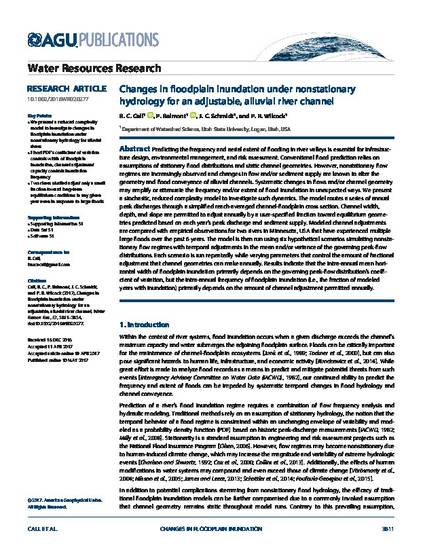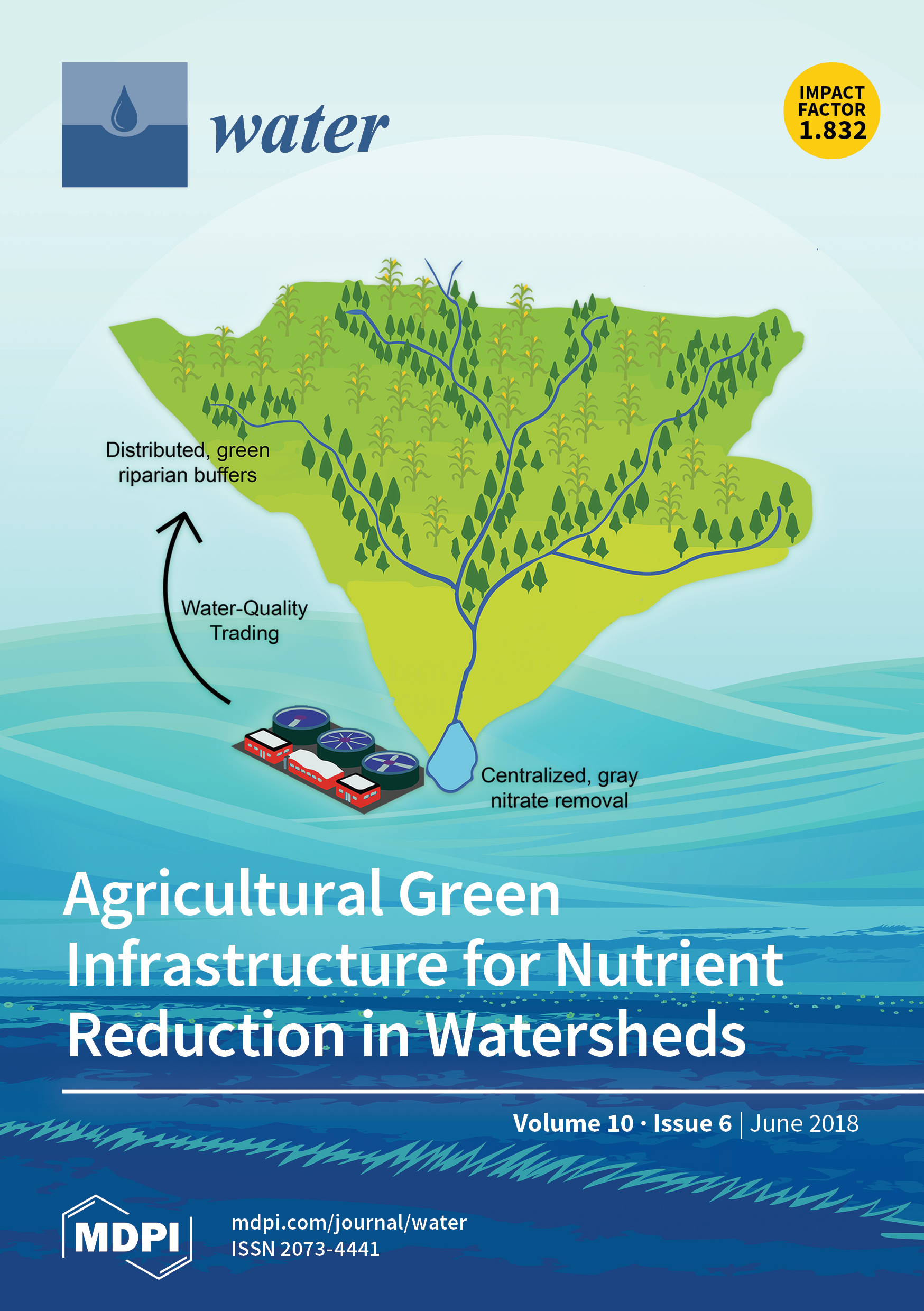Changes in floodplain inundation under nonstationary hydrology for an adjustable, alluvial river channel by Patrick Belmont

Predicting the frequency and aerial extent of flooding in river valleys is essential for infrastructure design, environmental management, and risk assessment. Conventional flood prediction relies on assumptions of stationary flood distributions and static channel geometries. However, nonstationary flow regimes are increasingly observed and changes in flow and/or sediment supply are known to alter the geometry and flood conveyance of alluvial channels. Systematic changes in flows and/or channel geometry may amplify or attenuate the frequency and/or extent of flood inundation in unexpected ways. We present a stochastic, reduced complexity model to investigate such dynamics. The model routes a series of annual peak discharges through a simplified reach‐averaged channel‐floodplain cross section. Channel width, depth, and slope are permitted to adjust annually by a user‐specified fraction toward equilibrium geometries predicted based on each year's peak discharge and sediment supply. Modeled channel adjustments are compared with empirical observations for two rivers in Minnesota, USA that have experienced multiple large floods over the past 6 years. The model is then run using six hypothetical scenarios simulating nonstationary flow regimes with temporal adjustments in the mean and/or variance of the governing peak‐flow distributions. Each scenario is run repeatedly while varying parameters that control the amount of fractional adjustment that channel geometries can make annually. Results indicate that the intra‐annual mean horizontal width of floodplain inundation primarily depends on the governing peak‐flow distribution's coefficient of variation, but the intra‐annual frequency of floodplain inundation (i.e., the fraction of modeled years with inundation) primarily depends on the amount of channel adjustment permitted annually.

PDF) Hydrogeomorphological differentiation between floodplains and terraces

PDF) Evaluating the Relationship Between Meander‐Bend Curvature, Sediment Supply, and Migration Rates

Water June 2018 - Browse Articles

Flood Protection Reliability: The Impact of Uncertainty and Nonstationarity

PDF] Human Amplified Changes in Precipitation-Runoff Patterns in Large River Basins of The Midwestern United States

Simulation Model for Collaborative Decision Making on Sediment Source Reduction in an Intensively Managed Watershed - Cho - 2019 - Water Resources Research - Wiley Online Library

Evaluating the Relationship Between Meander‐Bend Curvature, Sediment Supply, and Migration Rates - Donovan - 2021 - Journal of Geophysical Research: Earth Surface - Wiley Online Library

PDF) Enhancing Resilience of River Restoration Design in Systems Undergoing Change

PDF) Flood Risk Reduction from Agricultural Best Management Practices

)







